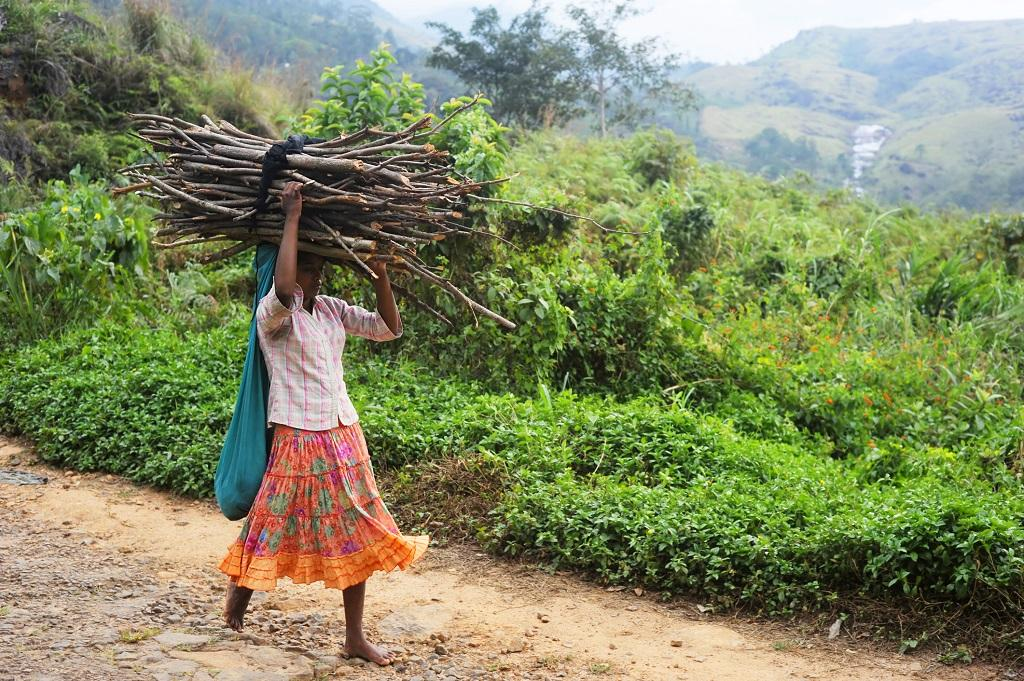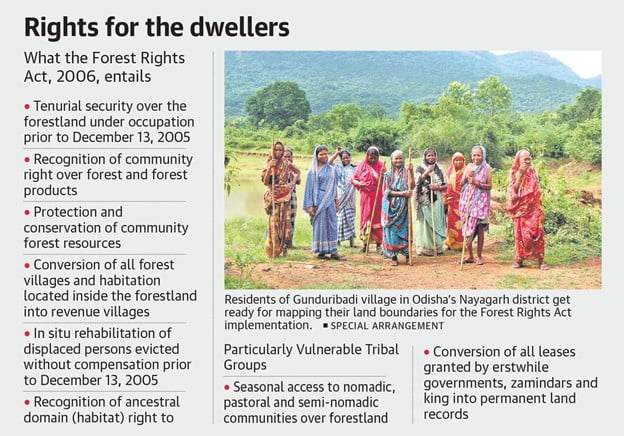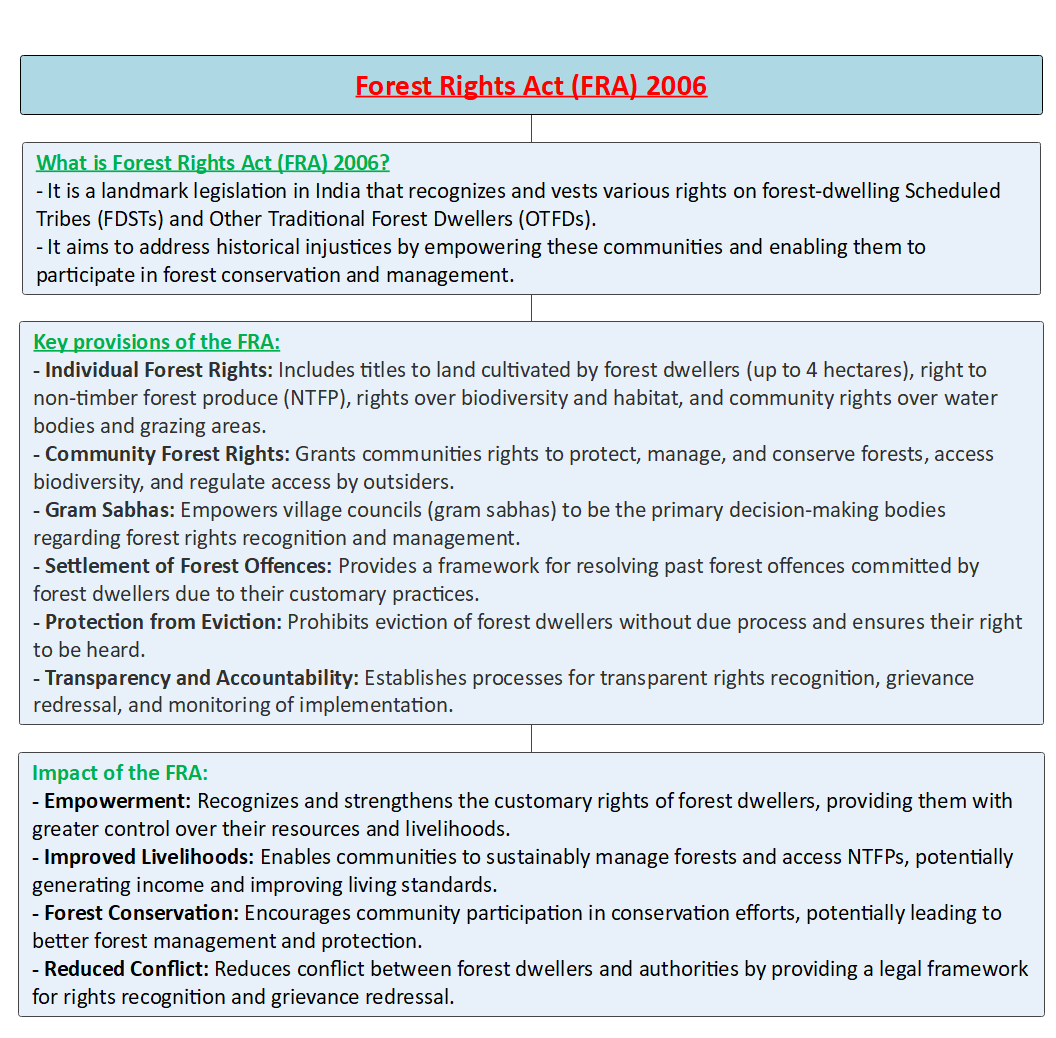
Copyright infringement not intended
Picture Courtesy: https://www.downtoearth.org.in/coverage/forests/forest-dwellers-rights-conservationists-started-it-sc-stayed-it-63422
Context: The recent notification of the Thanthai Periyar Sanctuary in Erode district, Tamil Nadu, has raised concerns among forest-dwellers regarding their rights under the Scheduled Tribes and Other Traditional Forest Dwellers (Recognition of Forest Rights) Act 2006 (FRA).
Details
- The Thanthai Periyar Sanctuary, formed from several reserved forests, has triggered concerns among forest dwellers. The exclusion of six tribal forest villages from the sanctuary has raised fears about potential violations of their rights.
- The concept of forest villages dates back to the colonial era, and efforts have been made to convert them into revenue villages to recognize and protect the rights of the inhabitants. Both the Union Ministry of Environment and Forests (MoEF) order in 1990 and the FRA in 2006 emphasized the conversion of forest villages to revenue villages, ensuring comprehensive recognition of rights.
- The recent notification acknowledges that rights admitted under the outdated Tamil Nadu Forest Act 1882 and those conferred under the FRA will continue to be enjoyed by individuals. Tamil Nadu has been criticized for its slow implementation of the FRA, contributing to the denial of forest rights.
- The creation of the Thanthai Periyar Sanctuary imposes restrictions on cattle-grazing activities. Traditional practices of the Bargur cattle, a native breed, may be affected, even though the FRA recognizes grazing rights.
- The Wildlife (Protection) Act 1972 (WLPA) governs the establishment of sanctuaries and national parks. The FRA, enacted later, takes precedence over the WLPA. Any provisions in the WLPA conflicting with the FRA are considered null and void. When notifying Protected Areas, the government must determine and acquire the consent for forest rights under the FRA.

Rights of forest dwellers
- The rights of forest dwellers in India are primarily governed by the Scheduled Tribes and Other Traditional Forest Dwellers (Recognition of Forest Rights) Act, 2006, commonly known as the Forest Rights Act (FRA). Enacted to address historical injustices and ensure the protection of the rights of forest-dwelling communities, the FRA recognizes and vests specific rights in individuals and communities.
Recognition of Forest Rights
- Individual Forest Rights (IFR): Forest-dwelling individuals or households are entitled to secure rights over the land they are cultivating or residing on as of December 13, 2005. These rights include ownership, access to collect, use, and dispose of minor forest produce (MFP) and community forest resources.
- Community Forest Rights (CFR): Tribal communities and other traditional forest-dwelling communities are eligible for community forest rights. These rights include the right to protect, regenerate, and conserve community forest resources and manage their use. CFR also grants the community the right to access, collect, use, and dispose of MFP within the community forest area.

Cultural and Religious Rights
- The FRA recognizes and protects the cultural and religious rights of forest-dwelling communities. This includes the right to protect, preserve, and manage sacred groves and traditional cultural practices associated with forests.
Habitat Rights
- Tribal communities who have traditionally resided in forests are entitled to habitat rights. These rights include the right to live in the forest, to access and use forest land and resources for habitation, or any other traditional activities.
Procedural Safeguards
- The Act provides a legal framework for the recognition of forest rights through a comprehensive and decentralized process. Gram Sabhas (village assemblies) play a crucial role in the determination of rights. They are responsible for initiating the process, conducting inquiries, and verifying claims.
Conservation and Sustainable Use
- Forest dwellers are expected to participate in the conservation and sustainable management of forests. The Act recognizes the traditional ecological knowledge of forest dwellers and their role in maintaining biodiversity and ecosystem services.
Implementation Mechanisms
- Gram Sabha: The gram sabha is the cornerstone of the FRA implementation. It initiates the process of recognizing forest rights, verifies claims, and protects community interests.
- Forest Rights Committees (FRCs): At the hamlet or village level, FRCs are constituted to assist in the verification of claims and the protection of forest rights.
Resettlement and Rehabilitation
- The FRA mandates that the resettlement and rehabilitation of forest dwellers due to conservation projects should follow the principles of voluntary and informed consent.

Overlapping Rights
- The FRA recognizes that forest rights may overlap with protected areas and wildlife sanctuaries. In such cases, the Act provides for mechanisms to harmonize conservation goals with the rights of forest dwellers.
Challenges and Criticisms
- Implementation Delays: The implementation of the FRA has been slow in many states, leading to the denial of forest rights.
- Lack of Awareness: Many forest-dwelling communities are not aware of their rights under the FRA, leading to underutilization.
- Conflict with Conservation Goals: There is a delicate balance between the rights of forest dwellers and conservation goals, leading to conflicts and challenges.
Way Forward
- Increased Awareness: Efforts should be made to increase awareness about the provisions and benefits of the FRA among forest-dwelling communities and government officials.
- Capacity Building: Continuous capacity-building programs for officials and local communities can improve the efficiency and effectiveness of the implementation process.
- Resolution of Conflicts: Dialogues and mechanisms for conflict resolution need to be established to address conflicts between conservation goals and the recognition of forest rights.
- Regular Review and Monitoring: Regular review and monitoring of the implementation process can help identify challenges and address them in a timely manner.
- Integration with Development Plans: The forest rights recognition process should be integrated with broader development plans to ensure the holistic development of forest-dwelling communities.

Conclusion
- The Forest Rights Act is a landmark legislation aimed at rectifying historical injustices and recognizing the rights of forest-dwelling communities. While progress has been made, challenges persist, and continued efforts are needed to ensure the effective implementation of the Act, safeguarding the rights and livelihoods of these communities while promoting sustainable forest management and conservation.
Must Read Articles:
THANTHAI PERIYAR WILDLIFE SANCTUARY: https://www.iasgyan.in/daily-current-affairs/thanthai-periyar-wildlife-sanctuary
FOREST CONSERVATION AMENDMENT ACT OF 2023: https://www.iasgyan.in/daily-current-affairs/forest-conservation-amendment-act-of-2023#:~:text=The%20Forest%20Conservation%20Act%20underwent,the%20necessity%20for%20such%20consent.
FOREST CONSERVATION RULES, 2022 V/S FOREST RIGHTS ACT, 2006: https://www.iasgyan.in/daily-current-affairs/forest-conservation-rules-2022-vs-forest-rights-act-2006#:~:text=Thus%2C%20the%20Act%20empowers%20the,community%20of%20forest%20dwellers%20to
COMMUNITY FOREST RESOURCE (CFR) RIGHTS: https://www.iasgyan.in/daily-current-affairs/community-forest-resource-cfr-rights
|
PRACTICE QUESTION
Q. The Forest Rights Act (FRA) aims to empower forest communities while also conserving forests. How can this delicate balance be achieved in practice, considering conflicting interests between communities, conservationists, and commercial entities?
Answer Structure:
●Introduce the main objectives and provisions of the FRA, and explain how it recognizes the rights and responsibilities of forest communities.
●Discuss the challenges and opportunities of implementing the FRA in different contexts, such as protected areas, tribal areas, or areas with commercial interests.
●Provide examples of successful or innovative initiatives that have achieved a balance between community empowerment and forest conservation, such as joint forest management, community-based ecotourism, or participatory monitoring.
●Analyze the gaps and limitations of the FRA, and suggest ways to improve its effectiveness and accountability, such as strengthening institutional mechanisms, enhancing capacity building, or promoting dialogue among stakeholders.
●Conclude by summarizing the main points and highlighting the importance of the FRA for achieving sustainable development goals and human rights.
|






